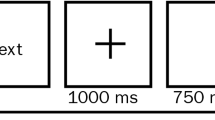Abstract
This paper discusses the ability of children in third (about 8-years-old) and fifth (about 10-years-old) grade to produce spoken and written summaries. Two main measurement types were distinguished: micropropositional analysis and story grammar analysis. In micropropositional analysis, the results showed significant differences between both summary conditions (spoken/written); while the spoken condition provided the use of inferences and macrorules, the written condition increased the literal recall (‘copy-delete’). In contrast, in the story grammar analysis, the findings showed that both the structural organization and the type of propositions recall were very similar in both types of summaries. Finally, our results showed that the older children appeared to have some qualitative advantage in the use of the story schema; and the effects of the summary type seemed to be less significant.
Similar content being viewed by others
References
Bekerian, D.A. & Dennett, J.L. (1990). Spoken and written recall of visual narratives, Applied Cognitive Psychology 4: 175–187.
Brown, A. & Smiley, A. (1978). The development of strategies for studying texts, Child Development 49: 1076–1088.
Christie, D. & Schumacher, G. (1975). Developmental trends in the abstraction and recall of relevant versus irrelevant thematic information from connected verbal materials, Child Development 46: 598–602.
Hayes, D.P. (1988). Speaking and writing: Distinct patterns of word choice, Journal of Memory and Language 27: 572–5585.
Kintsch, E. (1989). Macroprocesses and microprocesses in development of summarization skill. Boulder: University of Colorado, Institute of Cognitive Science. Technical Report, No. 89–5.
Kintsch, W. & van Dijk, T. (1978). Toward a model of text comprehension, Psychological Review 85: 363–393.
Lesser, R. (1990). Superior oral to written spelling: Evidence for separate buffers?, Cognitive Neuropsychology 7: 347–366.
McConaugh, J. (1980). Using story structure in classroom, Language Arts 57: 175–184.
Rickheit, C., Strohner, J., Musseler, J. & Nattkemper, D. (1987). Recalling oral and written discourse, Journal of Educational Psychology 79: 438–444.
Sorrell, J.M. (1991). Effects of writing/speaking on comprehension of information for informed consent, Western Journal of Nursing Research 13: 110–122.
Thorndyke, P.W. (1977). Cognitive structures in comprehension and memory of narrative discourse, Cognitive Psychology 9: 77–110.
Turner, A. & Greene, E. (1977). The construction of a propositional text base. JSAS Catalog of Selected Documents in Psychology.
Author information
Authors and Affiliations
Rights and permissions
About this article
Cite this article
Vieiro, P., García-Madruga, J.A. An analysis of story comprehension through spoken and written summaries in school-age children. Reading and Writing 9, 41–53 (1997). https://doi.org/10.1023/A:1007932429184
Issue Date:
DOI: https://doi.org/10.1023/A:1007932429184




